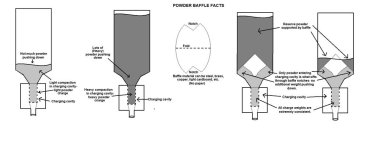Hello,
Do electronic auto powder measures work well with extruded powders such as N320 and N340? I’m having a heck of a time getting consistent results with my Redding powder measure. It works quite well on other powders that I have such as HP-38, Win 244, Sport Pistol etc. but not on the extruded stuff.
Do electronic auto powder measures work well with extruded powders such as N320 and N340? I’m having a heck of a time getting consistent results with my Redding powder measure. It works quite well on other powders that I have such as HP-38, Win 244, Sport Pistol etc. but not on the extruded stuff.
Last edited:

